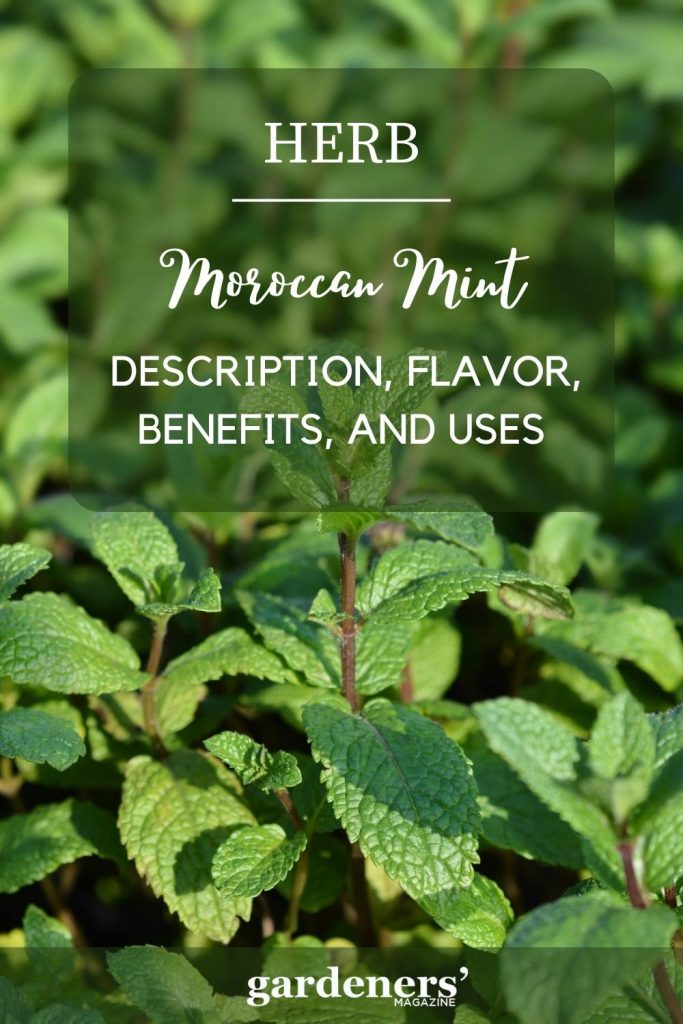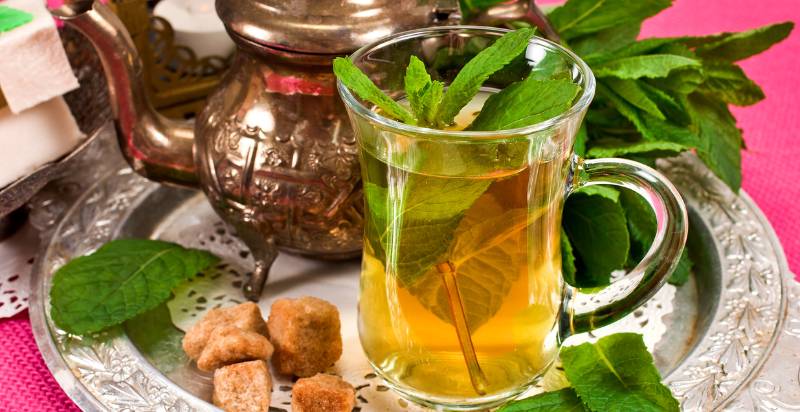Moroccan mint, also referred to as Mentha spicata var. crispa, is a species of mint native to the Maghreb region in North Africa. It has long been used for culinary, medicinal, and spiritual purposes throughout the Middle East and North Africa, although it is increasingly becoming popular worldwide due to its unique flavor profile and potential health benefits.
This article aims to provide a comprehensive overview of Moroccan mint. It covers its background and history, appearance, and growth habits, flavor profile and aroma, cultivation requirements, traditional uses in Morocco, commercial uses and global popularity, variations and hybrids available on the market today, sustainable harvesting and cultivation practices, and future prospects.
Description of Moroccan Mint
Moroccan mint is a perennial herb with erect stems that grow to about 30-60 cm tall. Its leaves are bright green in color and have fringed edges that give them a wrinkled appearance. The plant has small white or pinkish flowers which bloom in late summer to early autumn. Its distinctive flavor comes from the essential oils present in its leaves which can be harvested for culinary use.

Soil Preferences and Climate Requirements
Moroccan mint requires moist, well-drained soil with plenty of organic matter, such as compost or manure, added to it. The plant flourishes in full sun but can tolerate partial shade. It is also quite tolerant of heat and drought, making it an ideal herb for dry climates.
Taste Profile of Moroccan Mint
Moroccan mint is characterized by its unique flavor profile which combines sweet and savory notes with a hint of lemon and eucalyptus. Its taste is slightly pungent yet surprisingly refreshing at the same time, making it popularly used as an ingredient in both sweet and savory dishes, teas, tisanes, cocktails, desserts, candies, and chocolates.
The aroma of Moroccan mint is distinctive and complex. It is a combination of refreshing citrus, along with sweet and savory notes of spearmint and pepper which add an additional layer of complexity to the flavor profile. The plant’s essential oils are also responsible for its strong, invigorating scent which makes it a popular choice for use in aromatherapy products such as creams, lotions, diffusers or candles.
Health and Nutrition Benefits of Moroccan Mint:
Moroccan mint is not only celebrated for its refreshing flavor but also for its numerous health and nutritional benefits. It is rich in nutrients, such as vitamin A, which is an essential vitamin for eye health and immune function, and antioxidants. Moroccan mint provides protective benefits against oxidative stress and inflammation. The presence of menthol, which is the compound that gives mint its cooling sensation, also helps in digestion. It aids in soothing the stomach and relieving symptoms of indigestion and bloating. Additionally, Moroccan mint has traditionally been used to relieve headaches and improve mental focus, making it a versatile herb for overall well-being.
Moroccan mint has antimicrobial properties that help fight bacteria that cause dental plaque and bad breath. It can also regulate blood sugar levels, lower blood pressure, reduce stress, and promote better sleep patterns. Whether fresh, dried, or as an extract, Moroccan mint is a great addition to enrich your diet with flavors and nutrients that support a healthy lifestyle.
Cultivation Requirements:
A. Planting requirements
Moroccan mint is best planted outdoors from early spring to late summer when the soil temperature reaches at least 18-20°C (65-68°F). The plant can be started indoors ahead of time in small pots before being transplanted to its permanent location. The plant requires full sun and should be planted with adequate space between individual plants for sufficient air circulation.
B. Water requirements
Moroccan mint prefers moist, well-drained soil and should be watered regularly especially during dry spells or periods of intense heat. It is best to water the herb deeply but infrequently rather than lightly on a daily basis as this encourages the roots to reach deeper into the soil in search of moisture and nutrients. Mulching around the base of the plant can also help conserve soil moisture.

Conclusion
The unique flavor profile of Moroccan mint has made it an international favorite. It is widely used in many cuisines, from North African to Middle Eastern and beyond. Its popularity continues to grow throughout the world as people discover its unique flavor and health benefits.
Moroccan mint is an herb with a long history of culinary and medicinal use, and its popularity shows no sign of waning anytime soon. With its fresh flavor profile and easy cultivation techniques, it is no wonder that Moroccan mint has become such a beloved herb around the world. So why not give it a try? You won’t be disappointed!
FAQ:
What is Special About Moroccan Mint Tea?
Moroccan Mint tea brews are packed with calcium, magnesium, copper, fluoride, and selenium.
Where is The Best Place to Plant Moroccan Plant?
Give it a good spot in the sun (with occasional shade) and you are good to go! Mint grows anywhere: in a pot or in the ground. Keep in mind that mint is a fast-growing plant. Place the Moroccan mint in half sun or full sun.
What Makes Moroccan Mint Different?
Appearance: Moroccan Mint has distinctive crinkled leaves that are bright green and have a slightly fuzzy texture.
What is Moroccan Tea Called?
The traditional Moroccan tea ceremony is known also as “Atay Naa Naa” and it is considered the most refined expression of hospitality.
What is The Scientific Name for Moroccan Mint?
Moroccan Mint (Mentha spicata var. crispa ‘Moroccan’ -catchy right?!) is possibly the best “all round” variety of Mint. It is similar to Garden Mint but this is a deeper, more musky flavour.
Does Moroccan Mint Tea have Caffeine?
So long as your favourite beverage contains Green Tea leaves, then, it also has caffeine. But what is the Moroccan Mint Tea caffeine level? On average, an 8-oz cuppa of it has around 30-mg of this constituent.
- Everything You Wanted to Know About Red Tamarillos - June 2, 2025
- A Guide to Tulips: Everything You Need to Know & More… - June 2, 2025
- Guanabana: Description, Flavor, Benefits, And Uses - May 27, 2025

1 thought on “Moroccan Mint: Description, Flavor, Benefits, And Uses”
Comments are closed.